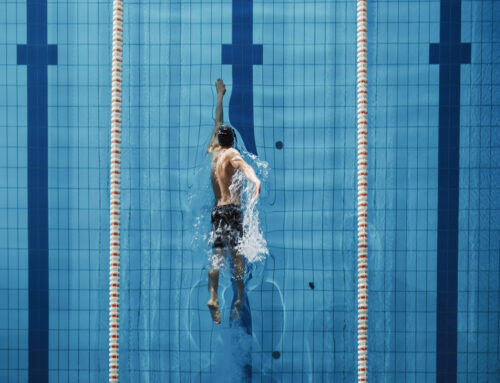By Stuart Koman, PhD and Gail Hanson-Mayer, APRN
Anyone can develop an eating disorder, and athletes as a group are more likely to develop eating disorders than non-athletes, but which athletes are at the greatest risk?
Women are more likely to develop eating disorders than men, and athletes in sports where body aesthetics or weight are important are more likely to develop eating disorders than those in other sports.
Two studies of college athletes, one in 1999 by Craig Johnson of the Laureate Psychiatric Clinic and Hospital in Tulsa and another in 2002 by Katherine Beals of the University of Utah in Salt Lake City, separately found that at least a third of female college athletes have some type of disordered eating.
However, there are also plenty of male athletes with eating disorders. The National Eating Disorders Association estimates that 33% of male athletes in aesthetic sports (bodybuilding, gymnastics, swimming) and weight-class sports (wrestling, rowing) are affected by eating disorders.
Writing about eating disorders in male athletes in Sports Medicine in 2006, Antonia Baum, M.D. of Fairfax Hospital in Falls Church, Va., detailed the extremes that male athletes sometimes go to when weight is a factor in performance.
Jockeys may sit in a heated car wearing a rubber suit, use hot-box saunas, self-induce vomiting, or take cocaine and amphetamines to suppress their appetite. Wrestlers abuse diuretics, binge and purge, and take laxatives to make their weight requirements before a match, then routinely binge following a match. Crew athletes wear many layers of clothing during runs on hot days to lose weight.
What about male athletes in major sports like baseball, football and basketball?
Newsweek reported that 40% of Cornell University football players surveyed engaged in binging and purging, which is associated with bulimia.
Writing about eating disorders in male athletes, Dr. Baum made a connection between eating disorders and the use of anabolic steroids in football, baseball and body building.
The use of steroids is a sign of “muscle dysmorphia,” where the athlete becomes preoccupied with increasing muscle mass to the exclusion of almost everything else. In addition, athletes who take steroids to improve performance eat more as a result and then try to control their weight, which can result in an eating disorder.
While bans on the use of performance-enhancing drugs are being increasingly enforced, the personality traits that lead to their use will still be there, even if steroid use is eliminated from professional sports.
Learn about the GOALS eating disorder recovery program for athletes at Walden.





